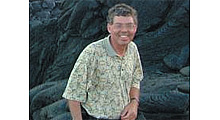
Doug Lung
If you used an indoor antenna back in the days of analog TV you know that moving around in a room can affect the RF environment. The reflections were visible as “ghosts” on the analog TV. The indoor antenna picking up analog TV is gone today but many houses now have Wi-Fi signals in them using MIMO technology designed to take advantage of different propagation paths to increase bandwidth. Considering how moving around affected the VHF and UHF analog TV signals, it's reasonable to expect humans would have the same impact on MIMO Wi-Fi signals.
Computer scientists at the University of Washington have been able to analyze how humans affect the RF environment and have even developed gesture recognition technology that allows people in a house to control other devices, even if they aren't in the same room! The UW researchers built a smart receiver that can receive all the wireless signals coming from devices throughout a home, including smartphones, laptops and tablets. A modified MIMO Wi-Fi router with multiple antennas could be adapted to function as a receiver. The multiple antennas allow the receiver to identify individual gestures from a group of people in the same house.
The new technology, called “WiSee”, has been submitted to the 19th Annual International Conference on Mobile Computing and Networking.
Lead research Shyam Gollakota, a UW assistant professor of computer science and engineering, said, “This is re-purposing wireless signals that already exist in new ways. You can actually use wireless for gesture recognition without needing to deploy more sensors.”
When a person moves in an RF field, the signal reflected from the person changes frequency slightly – several Hertz. Moving a hand or a foot causes the receiver to detect this Doppler shift. According to the news release, the technology can identify nine different whole-body gestures, ranging from pushing, pulling and punching to full body bowling. Researchers tested these gestures with five users in a two bedroom apartment and an office environment. Out of 900 gestures performed, WiSee accurately classified 94 percent of them.
The professional video industry's #1 source for news, trends and product and tech information. Sign up below.

Doug Lung is one of America's foremost authorities on broadcast RF technology. As vice president of Broadcast Technology for NBCUniversal Local, H. Douglas Lung leads NBC and Telemundo-owned stations’ RF and transmission affairs, including microwave, radars, satellite uplinks, and FCC technical filings. Beginning his career in 1976 at KSCI in Los Angeles, Lung has nearly 50 years of experience in broadcast television engineering. Beginning in 1985, he led the engineering department for what was to become the Telemundo network and station group, assisting in the design, construction and installation of the company’s broadcast and cable facilities. Other projects include work on the launch of Hawaii’s first UHF TV station, the rollout and testing of the ATSC mobile-handheld standard, and software development related to the incentive auction TV spectrum repack. A longtime columnist for TV Technology, Doug is also a regular contributor to IEEE Broadcast Technology. He is the recipient of the 2023 NAB Television Engineering Award. He also received a Tech Leadership Award from TV Tech publisher Future plc in 2021 and is a member of the IEEE Broadcast Technology Society and the Society of Broadcast Engineers.
